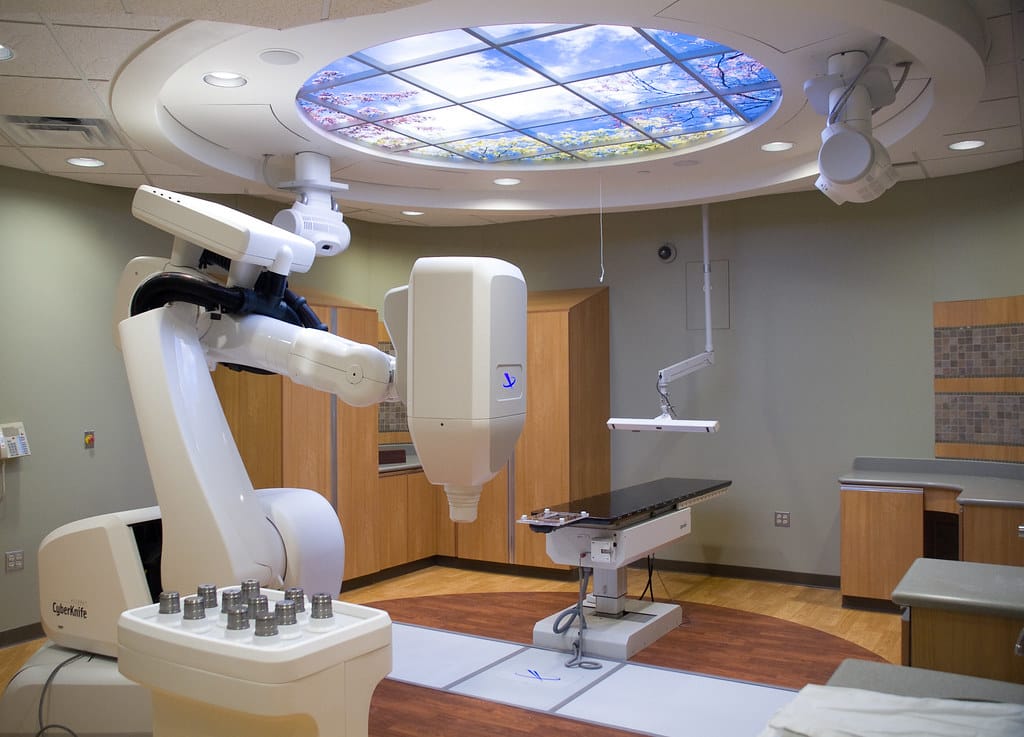Surgical Robot Performs Gallbladder Removal Without Human Intervention in Medical Breakthrough
A groundbreaking achievement in medical robotics has captured the attention of surgeons worldwide: an AI-trained surgical robot has successfully removed pig gallbladders without any human assistance, marking a significant leap toward fully autonomous surgery. This milestone represents years of research in combining artificial intelligence with precision robotics, potentially revolutionizing how complex medical procedures are performed.
The Autonomous Surgery Revolution
The experimental procedure, conducted by researchers at Johns Hopkins University, demonstrates the capabilities of their Smart Tissue Autonomous Robot (STAR) system. Unlike traditional robotic surgery where surgeons control every movement through remote operation, this AI-powered system made independent decisions throughout the entire gallbladder removal process.
The robot successfully completed laparoscopic cholecystectomies on multiple pig subjects, navigating the delicate anatomy without human guidance. Using advanced computer vision and machine learning algorithms trained on thousands of surgical procedures, the system could identify critical structures, avoid vital organs, and execute precise cuts with remarkable accuracy.
Technical Precision Meets Medical Expertise
What sets this achievement apart is the robot's ability to adapt to unexpected situations during surgery. Traditional robotic systems follow pre-programmed paths, but the STAR system demonstrated real-time decision-making capabilities. When encountering anatomical variations or unexpected bleeding, the AI adjusted its approach, mimicking the adaptive thinking of experienced surgeons.
The system combines multiple technologies: high-resolution cameras provide detailed visual input, while specialized sensors detect tissue density and texture. Machine learning algorithms, trained on data from expert surgeons, enable the robot to recognize patterns and make split-second decisions that could mean the difference between surgical success and complications.
Addressing the Surgeon Shortage Crisis
This breakthrough comes at a critical time when healthcare systems worldwide face severe surgeon shortages. In the United States alone, the Association of American Medical Colleges projects a shortage of up to 28,700 surgeons by 2033. Autonomous surgical systems could help bridge this gap, particularly in underserved rural areas where specialist surgeons are scarce.
Dr. Sarah Chen, a robotic surgery specialist not involved in the research, notes: "While we're still years away from implementing this in human patients, the potential to extend surgical expertise to areas without access to specialist surgeons could be transformative for global healthcare equity."
Safety and Precision Standards
The research team reported impressive precision metrics, with the autonomous system achieving accuracy rates comparable to experienced human surgeons. The robot completed procedures with minimal tissue damage and no major complications across multiple test subjects. However, extensive safety protocols remained in place, with human surgeons ready to intervene if necessary.
The AI system's learning capabilities mean it could potentially become more precise over time, analyzing thousands of procedures to refine its techniques. This continuous improvement model differs significantly from human learning, which relies on individual experience and can vary considerably between practitioners.
Regulatory and Ethical Considerations
Before autonomous surgical robots can treat human patients, they must navigate complex regulatory approval processes. The FDA and other international regulatory bodies will need to establish new frameworks for evaluating AI-driven medical devices that make independent decisions during life-critical procedures.
Ethical questions also emerge: How do we assign responsibility when an autonomous system makes a mistake? What level of human oversight is appropriate? These considerations will require careful deliberation from medical ethicists, legal experts, and healthcare professionals.
The Road to Human Application
While the pig gallbladder removals represent a significant milestone, researchers emphasize that human trials remain years away. The complexity of human anatomy, combined with the ethical and legal requirements for medical procedures, means extensive additional testing and refinement will be necessary.
The research team is already working on expanding the system's capabilities to handle more complex procedures and anatomical variations. They're also developing fail-safe mechanisms and improving the AI's ability to recognize when human intervention is needed.
Looking Forward: A New Era of Surgery
This breakthrough in autonomous surgery represents more than technological advancement—it signals a potential transformation in how we approach medical care. As AI systems become more sophisticated and regulatory frameworks evolve, we may see autonomous surgical robots handling routine procedures while human surgeons focus on complex cases requiring creativity and judgment.
The successful autonomous gallbladder removal marks just the beginning of what could be a revolution in surgical care, promising improved access to quality healthcare and potentially better outcomes for patients worldwide. However, the careful integration of this technology into medical practice will require continued collaboration between technologists, medical professionals, and regulators to ensure patient safety remains the paramount concern.
